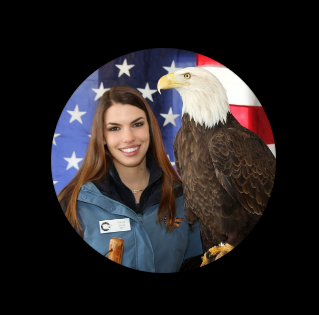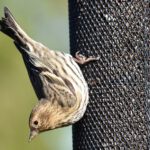As an avid bird enthusiast and owner of several pet doves and pigeons for the past 7 years, I’m excited to share my knowledge and personal experiences with these often misunderstood yet incredibly intelligent and affectionate birds.
In this comprehensive guide, you’ll learn everything you need to know before welcoming one of these unique pets into your home, including choosing the right species, proper housing and diet, health and behavior considerations, and more.
Why Keep Columbidae as Pets?
There are several reasons I’ve grown to love keeping Columbidae over the years:
- They are very social and form strong bonds with their owners, often sitting on your shoulder or cuddling up next to you. My ringneck dove Piccolo loves to nestle under my chin when I’m working at my desk.
- These birds are quite intelligent and able to learn tricks and commands like returning to their cages or flying to your outstretched hand. I’ve taught my white dove Lily to give me a “wing shake.”
- Doves and pigeons exhibit interesting behaviors like aerial displays, bow cooing to potential mates, gathering nest materials, and meticulously preening their feathers.
- They come in a stunning array of plumage colors and patterns. From a shimmering emerald Nicobar pigeon to an adorable peach-faced lovebird, there’s a Columbidae to match anyone’s taste.
- Most species don’t require an aviary and are perfectly content living free-flight indoors once their wings are properly clipped.
Choosing the Right Species
With over 310 species in the Columbidae family to choose from, it can get overwhelming to decide which is the best fit. As a beginner, I’d recommend opting for a calmer, more easygoing species that interacts well with humans. Ground-dwelling doves like diamond doves or Inca doves make wonderful starter pets.
For slightly more advanced owners, ringneck doves, mourning doves, and white-winged doves also have very sweet, docile temperaments. Be sure only to obtain captive-bred specimens from reputable breeders or rescue organizations, never removing wild birds from their natural habitats.
Housing Your Columbidae
One of the biggest mistakes first-time owners can make is using a cage that’s too small. Ground-dwelling doves should have cages a minimum of 2’ W x 3’ L x 3’ H to engage in natural behaviors. Arboreal or perching species need enough headroom for unobstructed flight, so aim for cages around 2’ W x 3’ L x 6’ H.
I house my diamond doves in a roomy suspended aviary crafted from powder-coated steel that allows sunlight to stream in from all angles. The bar spacing is narrow enough to prevent escapes but still permits adequate ventilation.
Inside each cage, place 2-3 perches of varying widths, coarse sand for nesting substrate, a food/water crock, and several toys like swings, mirrors, and treat balls. Spot clean the enclosure daily and give a thorough disinfecting weekly.
Columbidae Diet and Nutrition

A nutritionally balanced diet is vital for your dove or pigeon’s health and well-being. I feed my birds an organic, pelleted base along with fresh veggies, sprouted seeds, greens, and limited fruit. Species with specialized diets may require additional calcium or protein supplements.
Provide a clean, fresh source of drinking water at all times, changing it out daily. Use heavy crocks that won’t spill easily. During breeding seasons, pairs will also need access to grit and calcium to produce healthy eggs. My breeding Nicobar pigeons gobble up oyster shell grit.
Healthcare and Common Conditions
When obtained from ethical sources, most Columbidae are fairly hardy. However, they can suffer from certain bacterial, fungal, and parasitic infections. Prevention is key, so strict hygiene protocols are a must.
I take my birds to my avian-experienced vet twice yearly for routine wellness exams and nail trims. This allows the vet to catch any emerging issues early on. If introducing new specimens, always quarantine them for 30-45 days and slowly introduce them to watch for signs of aggression or stress. Overcrowding can lead to resource guarding and fighting.
Proper Handling Techniques
Columbidae have hollow, fragile bones so must be handled gently to avoid broken wings or legs. Approach low and slow, gently cradling the breast as you lift the bird. Limit handling periods to 15 minutes or less.
To pick up a dove or pigeon, place one hand below the feet and one above the wings. Scoop in an upward motion, bringing the bird close to your body for security. Avoid grasping tails or pinning wings, which can dislocate joints. Use slow, deliberate movements rather than sudden gestures that may startle your pet.
Training Your Columbidae
The intelligence and eagerness to bond with owners make most doves and pigeons highly trainable using positive reinforcement. For the first few sessions, simply reward with millet spray for tolerating gentle petting, stepping onto your hand or arm, or entering a carrier on cue.
Over time, using incremental steps, you can teach fun tricks like flying to designated perches, locating hidden treats, ringing bells with their beak, etc. I enjoy teaching my doves to race through agility courses! Always end each short 5-10-minute session on a positive note to keep your pet engaged and willing to learn.
Breeding Columbidae
Many owners wish to try breeding their doves or pigeons. However, this should never be undertaken lightly. It requires extensive research and preparation for the best outcome. Each pair needs a secluded, peaceful breeding area filled with nest pads, bowls, and materials. Do not disturb pairs once they have laid eggs.
Monitor food intake as nutritional needs increase. Once the chicks hatch, the parents take over rearing. Avoid interfering too much. Remove babies for hand-feeding only if the parents neglect them. By 4-6 weeks old, young birds develop independence. At 8 weeks, they’re ready for adoption. Thoroughly vet potential homes to ensure responsible care.
The Joys of Keeping Columbidae
I hope this overview has showcased just how rewarding it can be to welcome one of these endearing birds into your family. With attention to their extensive care needs and sensitivity to their behaviors, doves and pigeons make delightful, charismatic companion pets. They continually surprise me with their intelligence, loyalty, and unique quirks.
If you have any other questions about keeping Columbidae as pets, don’t hesitate to drop me a line! I’m always happy to chat “bird” with fellow enthusiasts.
Also Read – How to Attract Stunning Owls to Your Garden with These Simple Tips

Stina is the expert behind BirdFacts.net, dedicated to sharing her passion and knowledge about birds. With a degree in Environmental Science and over 6 years of birdwatching experience, she brings both expertise and enthusiasm to her writing. Stina’s work aims to inspire appreciation for birds and promote responsible birdwatching. Follow her bird-filled journey on Instagram.





